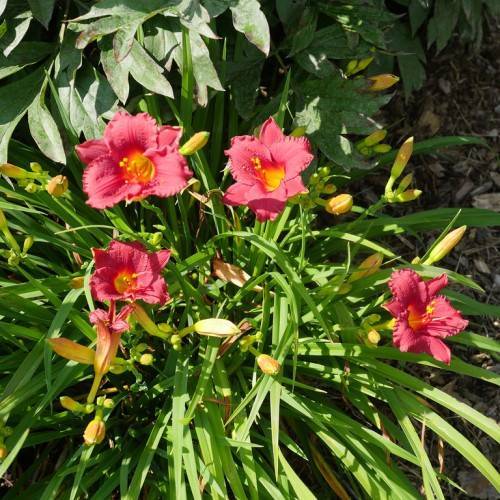
daylily
Hemerocallis 'Little Business'
Cycle:
Herbaceous Perennial
Watering:
Average
Hardiness Zone:
3 - 9
Flowers:
Flowers
Sun:
Full sun,part shade
Leaf:
Yes
Growth Rate:
Low
Maintenance:
Low
Drought Tolerant:
Yes
Salt Tolerant:
Yes
watering
Daylilies (Hemerocallis 'Little Business') should be watered thoroughly at least once per week, making sure that the top 6 to 8 inches of soil are moist. However, the frequency of watering may need to be adjusted depending on how hot and dry it is. If the temperatures are high and the soil is drying out quickly, the plants may benefit from an additional watering once every few days. During the summer months, especially if the plant is planted in full sun, even more frequent watering may be necessary. After watering, it is important to allow the soil to dry out between sessions in order to avoid rotting the roots.
sunlight
Daylily (Hemerocallis 'Little Business') prefers full to partial sun and requires 6-8 hours of sunlight each day for optimal growth and flowering. Plant in an area with morning sun and afternoon shade for best results. When planted in areas with over 8 hours of direct sun each day, daylilies may need extra water and protection during the hottest points of the late afternoon to prevent wilting. Additionally, adding a layer of mulch around the plant can help retain moisture and shield the plant's roots from the harsh summer sun.
pruning
Pruning day lilies (Hemerocallis 'Little Business ') can help promote a healthy and attractive plant, however the frequency and amount of pruning should be tailored to the individual species. In general, daylilies should be pruned twice a year. In early spring before the new growth begins, pruning can be done to remove frozen or dead foliage and reduce the size of the clump. This will help revive and shape the plant. In fall after the flowers have bloomed and the foliage slowly loses its luster, a second round of pruning can be done to remove any dead foliage and reduce clump size. Be careful not to prune too much as daylilies are designed to slowly fill a bed over several years. Prune no more than 1-third of the foliage in each pruning session. Use sharp pruning scissors to ensure a clean cut.
